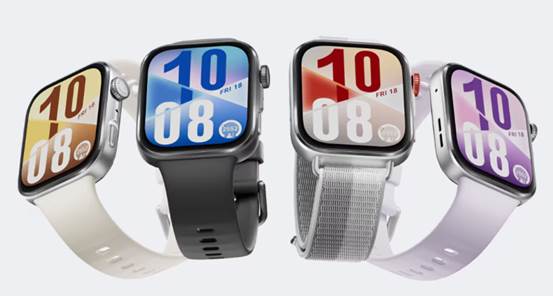Wristwatches
have long been symbols of style, precision, and craftsmanship. But in the age
of wearable tech, smartwatches are challenging their role by offering far more
than just the time. These digital wrist companions are redefining what people
expect from a watch, blending fitness tracking,
communication, and lifestyle features in one sleek package. So, the question
arises: can smartwatches truly replace traditional timepieces?

A Modern Alternative or Just a Trend?
Let’s
explore the evolving role of smartwatches and how they compare to classic
timepieces in functionality, design, and everyday value.
Functionality Beyond Timekeeping
Traditional
watches are built for precision and reliability, but they mainly tell time.
Smartwatches, on the other hand, offer a range of functions like fitness
tracking, heart rate monitoring, GPS navigation, call alerts, and more. Whether
you're monitoring your steps, checking emails on the go, or following your
running route with real-time maps, a smartwatch offers a digital edge that
classic watches simply can't match. For the tech-savvy user, this
multifunctionality is a major advantage.
Design and Aesthetic Appeal
Classic
timepieces win hands down when it comes to elegance and timeless craftsmanship.
Luxury brands like Rolex or Omega create watches that are not just functional
but also status symbols and heirlooms. Smartwatches, however, are improving
rapidly in design. With customizable watch faces, interchangeable straps, and
sleek bezels, models like the Huawei Watch Fit 4 strike a balance between contemporary style and comfort. While
they may not replace the artistry of a mechanical watch, they’re closing the
gap for modern users seeking both style and utility.
Health and Wellness Integration
Smartwatches
excel at delivering insights into your health. From 24/7 heart rate monitoring
to sleep tracking, blood oxygen readings, and even ECG features, they offer
tools that go far beyond the capabilities of a traditional timepiece. These
real-time wellness stats help users make informed lifestyle choices and detect
early signs of health issues. For many, this health-centric functionality is a
compelling reason to wear a smartwatch daily, making it far more than a
timekeeping device.

Battery Life and Longevity
One
area where traditional watches hold a significant edge is battery life. Quartz
watches can last months or even years on a single battery, and mechanical
watches only require occasional winding. In contrast, smartwatches usually need
charging every few days, though some models, like Huawei’s Watch
Fit series, offer
10 days or more battery life. While battery technology is improving, users
still need to manage charging cycles, which might not appeal to everyone,
especially those who appreciate the simplicity of a traditional watch.
Durability and Sentimental Value
Classic
timepieces are built to last for decades and are often passed down through
generations. Their mechanical intricacy and brand heritage give them an
emotional and collectible value. Smartwatches, however, are more like
smartphones—they evolve rapidly and may become outdated in just a few years.
While some high-end models feature durable materials and water resistance, they
rarely carry the same legacy appeal or long-term durability as their analog
counterparts.
Lifestyle and User Preference
Ultimately,
whether a smartwatch can replace a traditional watch depends on personal
preference. A mechanical or analog watch will always have a place for someone
who values craftsmanship, simplicity, and tradition. But for users who want an
all-in-one device that supports an active, connected lifestyle, the convenience
and capabilities of a smartwatch are hard to beat. Some users even choose to
wear both—one for daily use, and one for formal occasions.
Conclusion
While
smartwatches offer impressive features and growing style options, traditional
timepieces still hold unique charm and significance. Rather than outright
replacement, what we’re seeing is a shift in purpose—smartwatches are evolving
into everyday essentials, while classic watches retain their value as luxury
items and personal statements. Depending on your lifestyle, there may be room
for both on your wrist or in your collection.
